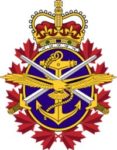I have been a constant critic, in these pages, and in other fora, of the Canadian military’s command and control (C²) superstructure. I believe it is overly complex and bureaucratic, too top heavy and it is ‘fat,’ even, I have said, morbidly obese. I think Canada has far, far too many admirals and generals, almost all (except for, perhaps, a half dozen, at most) being one or two ranks higher than is needed for the job they do, in too many headquarters that do little of value except talk to at each other. I believe our C² has more do do with trying to emulate our (equally grossly obese) neighbour to the south than with meeting the needs of Canada.

The solution to the C² obesity problem is about 99% political … it needs a minister who will direct the Chief of the Defence Staff to chop something between ⅓ and ½ of the admirals and generals and commodores and Navy captains and Army and Air Force colonels and many of the HQs in which they sit. Of course that will require a massive (and overdue) revision to the entire military remuneration system so that admirals and colonels and corporals and privates, too, all get paid, appropriately well, for what they do for Canada. That needs to be agreed, by the prime minister, before the Minister of National Defence orders give the order to “chop.”
But that’s the top level problem and I have, I think, ranted on enough about it … my readers will either agree or not.
I believe, as I said the other day, that there is also a serious problem at the operational and tactical levels of the military, and it involves more than just command and control (C²), it involves the command, control and communications (C³) systems and, especially, the degree to which they are reliant on modern electronics and, especially, yet again, the electro-magnetic spectrum to establish a global information network upon which the military is nearly totally reliant. When, not if, “nearly totally reliant” becomes over-reliant, as I believe is now the case, and is most pronounced, the military sometimes uses the acronym C4I, meaning command, control, communications, computers and intelligence or worse, C4I2 which means command, control, communications, computers, intelligence and interoperability according to the US Department of Defense Dictionary of Military and Associated Terms. The mere fact that we seem to want to assign fancy acronyms to a few aluminium and plastic boxes full of solid sate circuits seems to me to indicate that we don’t actually understand that, beneath the blinking lights and flashy displays is a process than, in many respects, is little changed from what we did 75 years ago. The need to manage and handle information is unchanged, the technology we can use to do those things has changed.*
The problem, as I see it, is that the modern military is fascinated with what technology can do ~ and it can do a lot of really useful things ~ but are less willing to understand its limitations.
Don’t get me wrong: I think computers are wonderful; they make many mundane but time consuming tasks easy to accomplish in the blink of an eye. Ditto for radios and radars which seem to erase distance as show us things that used to be invisible. But all technology comes at a price … sometimes, as in the world of electronic warfare (EW), the price is fairly easy to understand: if you say anything on your radio then a modestly sophisticated enemy can, quickly and accurately, locate your exact position and send artillery or sir strikes your way; or the enemy can ‘spoof’ your communications networks, feeding false information into it and spreading confusion. The enemy can, also, use the radio spectrum to gain access to (hack) your computer network and make you deceive yourself. Or the threats may be physical, like the anti-satellite networks, such as the Chinese are developing, which according to Lieutenant General Jay Raymond of the United Stares Air Force, mean that “soon every satellite in every orbit will be able to be held at risk.” Our, Canadian and allied, national surveillance and air defence systems use satellite networks as do our strategic command and control (C²) networks which manage Canada’s armed forces at home and overseas. Even the most modern “networked” systems might be rendered deaf and blind.
 I must have misread the calendar, because this advance report from Ted Glover at the Daily Norseman seems to be a couple of weeks early:
I must have misread the calendar, because this advance report from Ted Glover at the Daily Norseman seems to be a couple of weeks early:



